It's amazing to finally see that product operations has become a profession in its own right. It's now understood and respected across product organizations, and organizations in general, across the world.
I'll share a little bit of my journey leading and building product operations in some amazing companies, when they were still young and growing. I'll also share a little bit about Dragonboat, where, based upon my learnings, I created a purpose-built platform for product operations and outcome-focused product teams.
In this article, I’ll be focusing on:
- The Country Launch Playbook
- What is product operations?
- How product ops accelerate portfolio outcomes
- Enabling teams
- Empowering vertically
- Orchestrating cross-teams
- When to focus on what
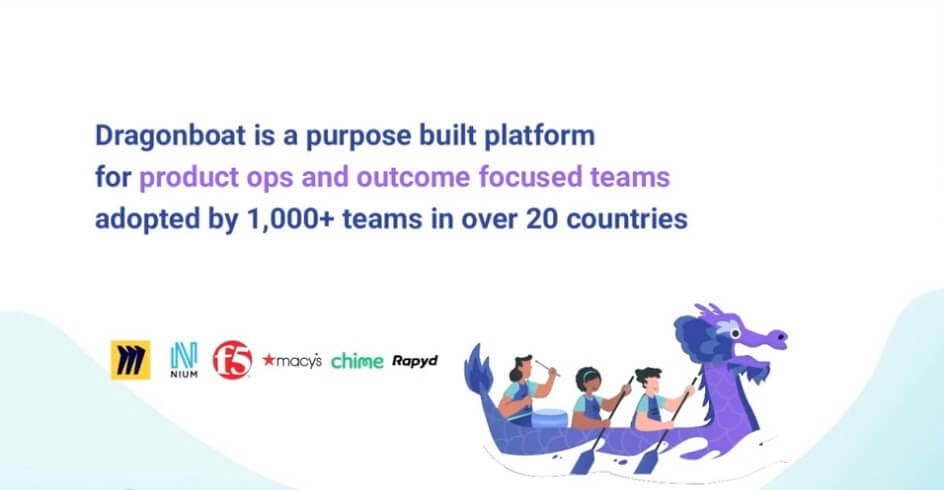
The Country Launch Playbook
On my first day at PayPal, I went to my desk and found a binder - "The Country Launch Playbook." It turned out that was the brainchild of the first product operations person called Annie Kim.
As everyone may know by now, launching a product like PayPal or some more complex products like Uber and Airbnb, from one country to another, is more than just translating. There is a lot going on in terms of legal, compliance, HR, banking partnerships, and so on.
Product management is a small part of the whole thing. There are so many parts and moving pieces that you can easily forget one aspect and cause outages or not launch at all.
Annie created PayPal's "Country Launch Playbook" and I worked with her along the way to help guide a global expansion from two countries to way over 100 countries.

That was my first exposure to product operations and where the journey started.
What is product operations?
I was asked all the time, from company to company and team to team, what is product operations? What do you guys do?
We had to come up with a different name that's similar to product operations; program managers, operations, strategy operations, and so on.
Accelerating portfolio outcomes
Ultimately, we realized all the things we do are more than just efficiency, more than just connecting dots, more than just visibility. The ultimate goal and our charter or mission is all about accelerating portfolio outcomes.
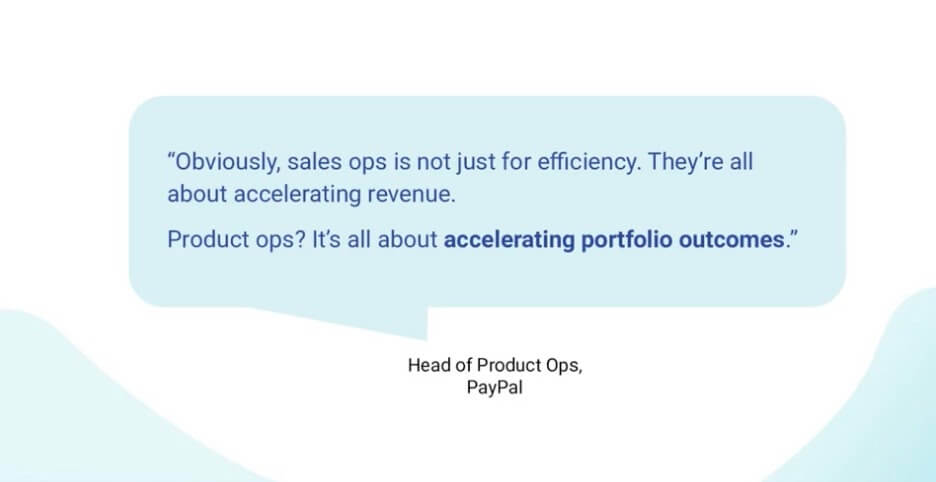
That's why product teams exist and a product ops team can help make it it happen.
How do we do that?
There are so many things we could do. Through working in companies of different sizes, we realized there are three key ingredients or pillars of how product ops can help accelerate portfolio outcomes.
How product ops accelerate portfolio outcomes
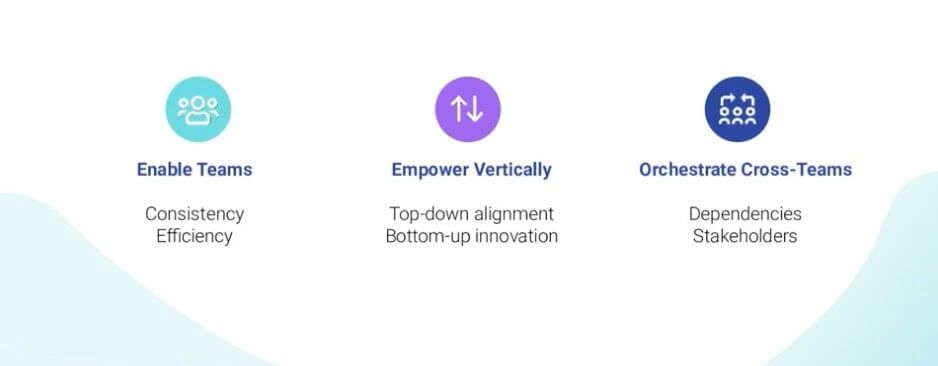
Enable teams
Teams already exist before product ops come in, in most cases, product ops are created as a dedicated role when the product team is starting to scale.
In the case when I first started at PayPal, all the product managers, program managers, and release management fit into one room. You can imagine how small that team was.
Consistency & Efficiency
Product operations helped take things that one team learned to the other, created efficiency, and created consistency so the learnings and best practices could be shared.
Empower vertically
The second part of product operations becomes more visible as the company scales, and a byproduct of the scaling is that it empowers vertically.
Top-down alignment
That means we would connect the executive teams and product teams to drive top-down alignment in our goals, strategies and focuses.
Bottom-up innovation
Where that strategic context and focus helped the team to foster innovation and create products, and we provide that lineage empowerment, so both parties can focus on what they're doing best.
Orchestrate cross-teams
The third ingredient of product operations is orchestrating cross-teams. This may be something overlooked by many but as we know, when companies scale, which is a byproduct of growth, teams need to work together.
Dependencies
Quite often, it's difficult because everyone focuses on their own goals, and priorities, and the dependencies won't go away. Product operations play a key role to make sure there's no silo and no dependency costs are holding us back and preventing us from being able to move forward.
Stakeholders
Obviously, there are also stakeholders, more and more of them, how do we work with them, and take things in and move things out?
Do we need to work on enabling the team first, get everything done before we go to the other steps? No, it's more that we do a little bit of all of them and move things up to the next level.
Enable teams
Processes and playbooks
For example, the playbook I first experienced in product operations really helped the team take the learnings from one area, from one team, and created and leveraged those across another team.
Why is it important? Because a lot of things we do as product managers are quite complex. So when we understand some of the 'gotcha' moments, we need to make sure we don't forget.
Example: PayPal Australia
The same story goes back to the country book we created, one of the contributions, unfortunately, was a failure. When we were launching PayPal Australia, the site went down a few weeks after.
We thought there was a bug, we were running around trying to figure out what was going on. Finally, we found out our domain registration expired and the site was down. So we added that into the playbook, make sure our domain registration is always up to date, there's the right process to validate, and so on.
Templates and operating rhythm
The second part of the enable teams is really around operating rhythms. The seasons of the product management, the seasons of the product organization, the long term, the quarterly milestones, and months and weeks, etc.
Again, these create a way of teams working well together; the handshakes, the efficiency coming along.
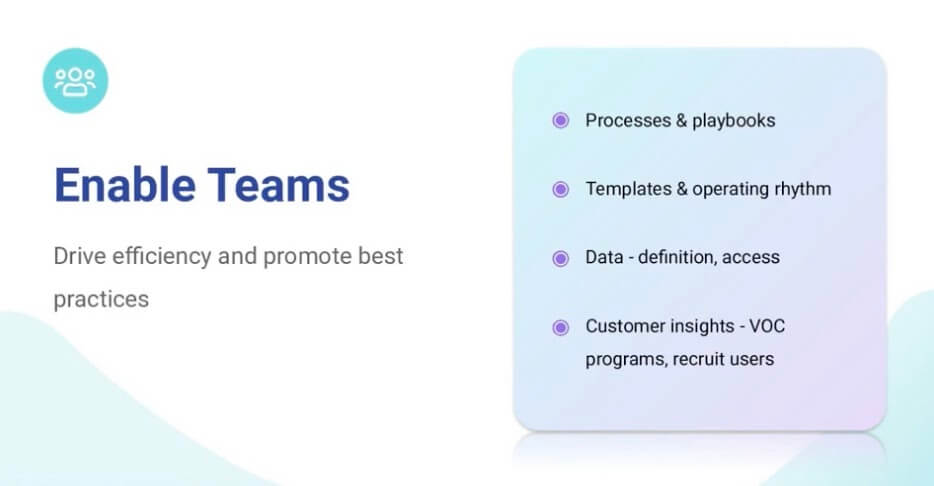
Top-down alignment and bottom-up innovation
Once you build a team, and you have everyone humming, and working really well together, what's next? As a company scales, there are many things we're faced with and choices to make.
Example: Big Commerce
When I joined Big Commerce a few years back, they were just expanding their product teams from a base in Sydney to San Francisco. At that time, the company had a lot of discussions on should we go down market? Should we go upmarket?
For some of you, if you're not familiar, Big Commerce is an e-commerce platform. It was and is still competing with Shopify amongst the others. At the time the company was growing, but there are trends to see, there are additional opportunities we can go through.
The debate within the company of going downmarket with a freemium promoted by marketing teams versus go upmarket with enterprise promoted obviously by sales teams and partner teams has been going on for a while and the product team got pushed around in different areas.
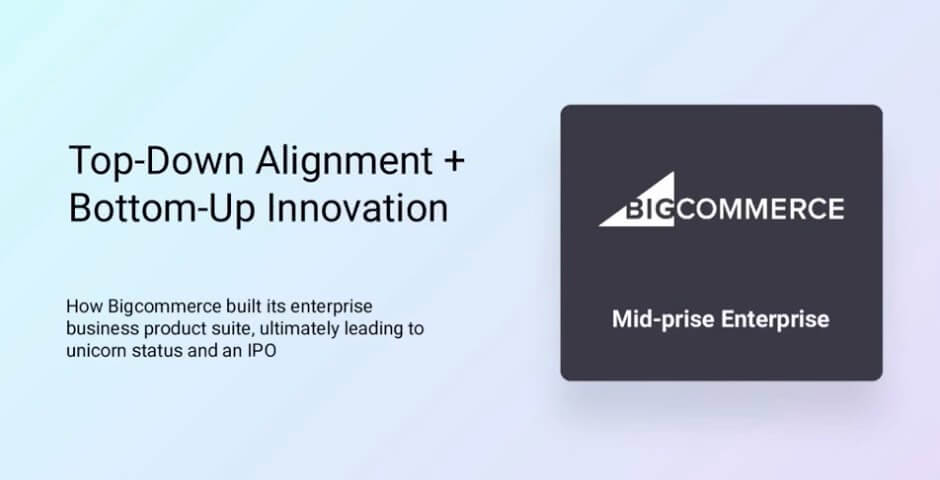
One of the first things I did in joining the company running strategy and operations was to work with the stakeholders; the Chief Product Officers, and the CEOs, and all the C-Suite team to try to drive our focus on what we should do.
Ultimately, after a very lengthy and passionate discussion, we decided to have a focus on existing business and test run on-going upmarket. That strategic alignment, as well as how much time and engineering product resources we allocated to the team really helped provide a lot of clarity.
We would invest 80% of our resources and the product focus on our core business, and 20% of them into growing into the enterprise, mid-price space. As the product team innovates how we could do that with a small number of resources and we test along with the marketing, sales, and so on, to find out whether it's a viable business.
We found out there are opportunities the next planning quarter, we added more investment in that space. It went from 80/20 to a much higher rate ratio down the road.
So the rest is history, we took Big Commerce from a little-known e-commerce platform that didn't have much of a space, to a very well-known mid-prise enterprise e-commerce. We led the headless commerce movement and ultimately went IPO this year for more than a $4 billion valuation.
That's what product ops helped with - driving this top-down and bottom-up empowerment by leading the hard conversations. And making sure we have alignment on not only our business goals but also our product strategy. Make sure the product strategy leads into product OKRs and turning to initiatives, which helps the team focus.
So when you talk about prioritization, it's no longer just abstract scores and numbers, because you prioritize to drive business outcomes. And the focus of the business changes, because the business itself changes, therefore the prioritization has to tie all of that together.
We give the team the strategic direction on when they can move forward.
Empower vertically
Now, it's not just about top-down, it's also super important for the team to provide visibility and context to other functions, to leaders to help them understand where we are. Are we making the progress we assumed we'd make? How do we make adjustments along the way?
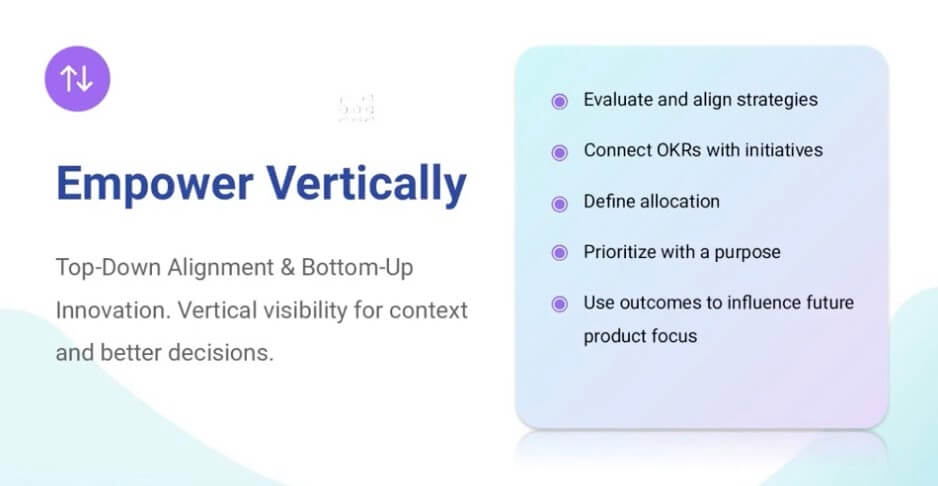
So this is a story of vertical alignment. We had a process in place to enable the team to work really well. We made sure we had vertical alignment, top-down focus, and bottoms up innovation and visibility.
What's next? Well this where the complex part actually happens.
Cross-team collaboration to enable outcome-driven product
Nium
Nium is a recent unicorn that came out of Asia and it's now a multi-product payment powerhouse. They're a customer of Dragonboat. When they joined us nearly two years ago, it was just a one-product startup beginning to scale.
The Chief Product Officer at Nium has a vision, knowing there's a market for much more robust and much more opportunity around payment - their core product.
He wants to make sure the company grows and scales into that place. But how? Part of it is the platform ties some of the product and some of the services so they can scale much better, versus building one product at a time.
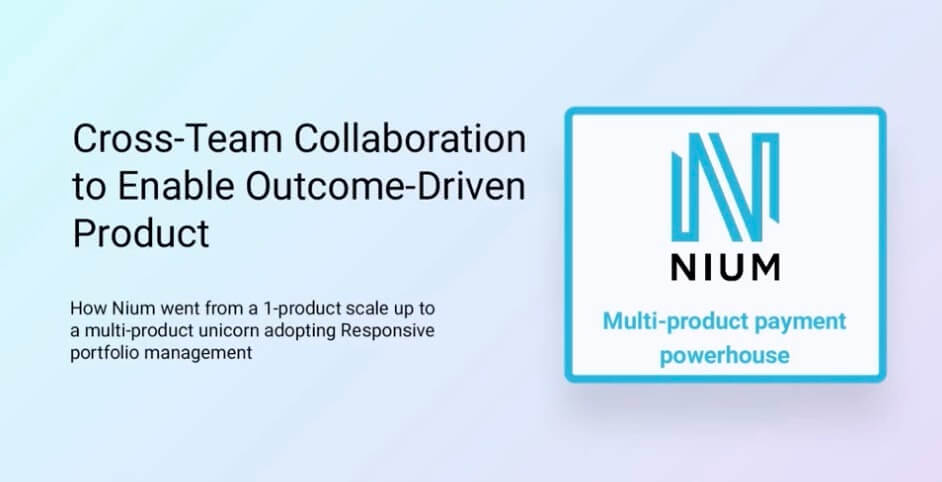
There are a lot more dependencies, there are a lot more redundancies. So having platform ties, the product having more services and shared with the solution on top of it makes a lot of sense. But it's very hard to plan and execute this because of all the dependencies.
Therefore with the savvy product operations, knowing how to run the process, tying to the outcome, having a product roadmap across the portfolio, and with the help of tooling, the team can actually figure out the dependencies. The different pieces come together, the visibility - see where things are, and being able to make adjustments as we move along really enabled the cross-team collaboration for Nium. Enabling them to realize their ambition and go from a single product startup company to a multi-product payment powerhouse globally.
Orchestrate cross-teams
Here are a few things around orchestrating cross-team collaboration, engagement, as well as solving bottlenecks.
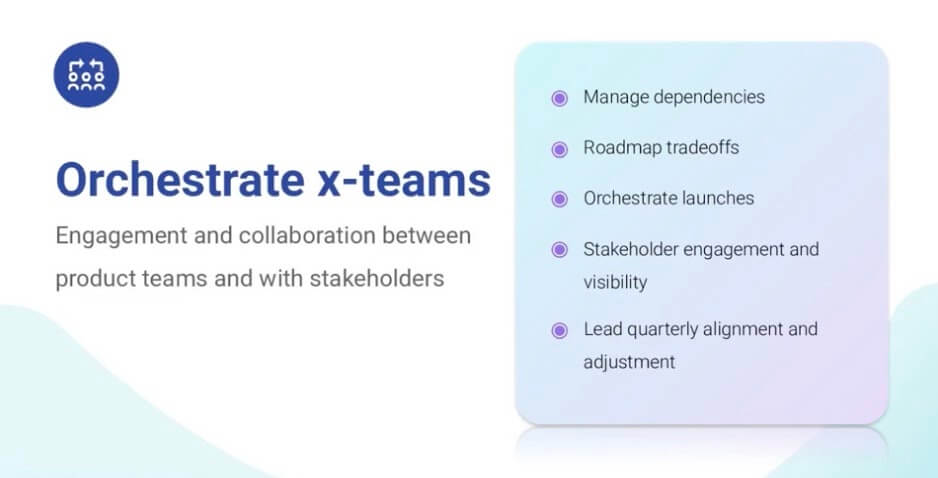
Manage dependencies
The first thing about cross-team engagement is around dependencies. We know today that if you scale up in product operations, that means you're definitely going to have dependencies.
And if you do not see a dependency between teams, that's something you should solve. That means that you create a lot of product and/or organizational silos. That the services, both in terms of product, product experiences, as well as the technology platform, could be optimized to be shared.
Roadmap tradeoffs
So you will have a platform team, you will have a solution team, and the dependency needs to be managed effectively. You need to be able to identify, and be able to align to it, and understand how you trade-off between teams.
Orchestrate launches
Then later on, as the company grows and scales, orchestrating launches and so on will become more and more important.
Stakeholder engagement and visibility
Quite often cross-team collaboration is done through stakeholder engagement, increased visibility, as well as adjusting the quarterly alignment.
Recap: achieving the mission of product ops
Product operations' mission is around accelerating portfolio outcomes because we are the ones tying product teams together. That means enabling the team so that they can have efficiency, and they'll be able to function more effectively.
At the same time, we also need to make sure that we connect executives and the team's so they have vertical alignment. We need to make sure we empower both parties with strategic contacts, innovation on the team, as well as visibility to give the teams the ability to make critical decisions when needed.
Finally, one of the most complex but critical pieces is around cross-team, cross-function collaboration, and engagement, and that all needs to build on top of a foundation of an outcome-driven culture.
Not a feature, not a list of things to do. That needs to be built and based upon a solid product portfolio management platform and a framework so everything is tied together.
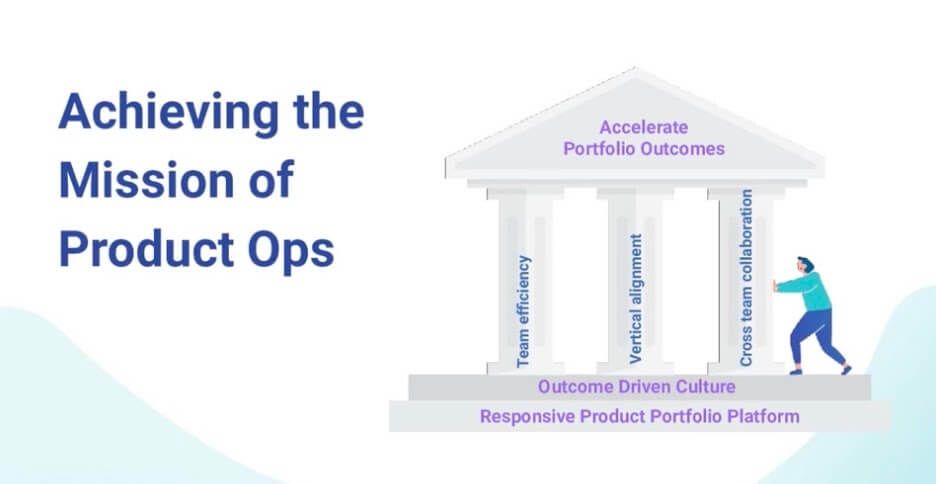
There's a lot to do, how do we focus?
When to focus on what
We always said that product operations are the product managers of process. The process of running an outcome-driven product organization.
As product managers obviously we know we find problems, we build solutions, we iterate and see the results. The same thing can be said for product operations in that based on where you are these three levels are not based on the size.
It is really based on the function itself, as well as the readiness of the organization.
Starting
Enable teams
When you start on the team, you need to make sure you have a basic standard product development lifecycle from the very beginning. You need to have the intake to the discoveries and planning and so on. Along with the go-to-market, how it's going to be integrated.
The whole product development lifecycle needs to integrate everyone.
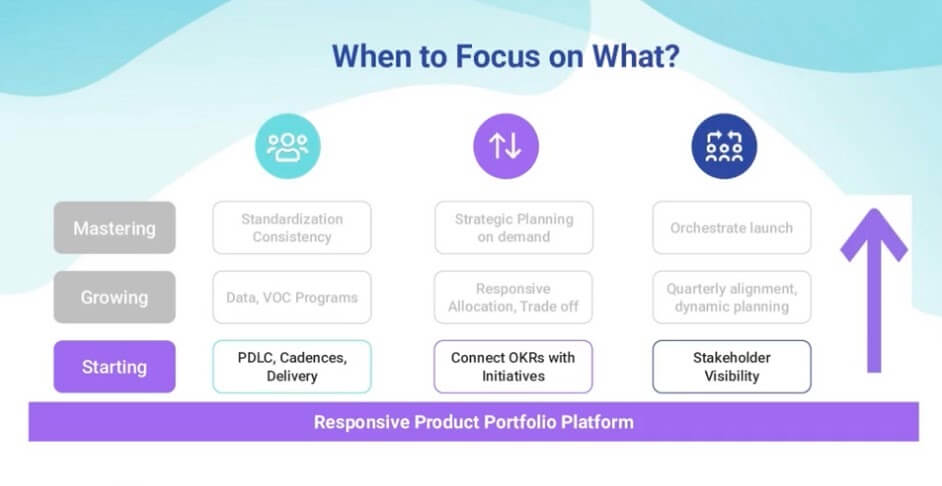
By the way at PayPal, we did it three times as we scaled.
Cadences, seasonality, everyone needs to know when and who to make sure the team gets what they need to deliver, not just the features, deliver outcomes.
Empower vertically
The second part around the vertical alignment is around tying OKRs with initiatives - that's the most basic stuff to get things going from there. Then we can talk about more later on.
Orchestrate cross-teams
Finally the best way to get the team to work together is to provide visibility. Once we have the visibility we can figure out the more complex parts around dependencies, around allocations, etc.
Growing
Once we pass the first starting phase, we go to the next phase which is all around growing the organization to make more efficient decisions, not just efficient ways of working.
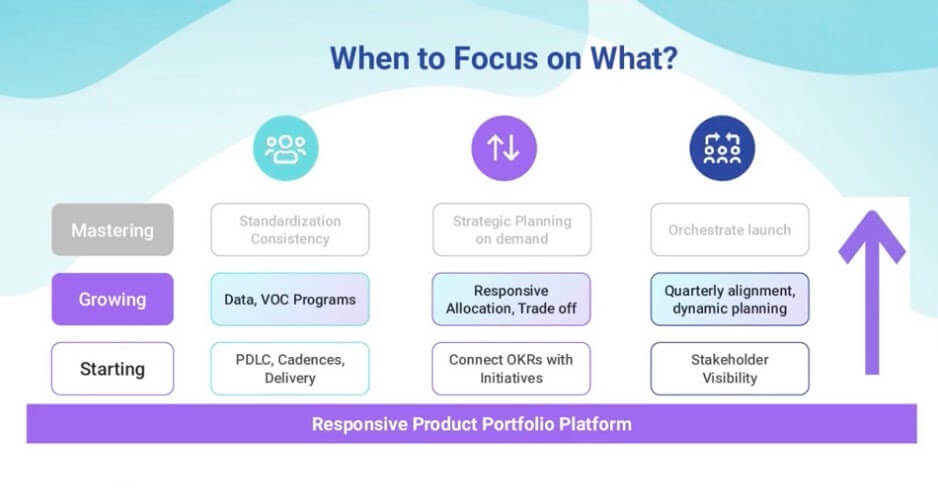
Enable teams
Providing data, leading the voice of customer programs. I want to touch on something very interesting, which is that the foundation needs to be strong before you go to the next level.
At Big Commerce we had a voice of the customer program very early on. We built that into our DNA, and realized that it was actually causing more issues. Because there was so much bottoms-up information we didn't really build an OKR connection with the initiatives.
Therefore, we actually had a lot of issues. So having the foundation before you build the next level on top of it is they way to go. Make sure you have a VOC program and after you have the strategy and the context, your alignment is critical.
Data is also critical but the main thing here is around access to data, around standardization of a definition, so that when you say the conversion of one team versus the other, it means the same.
Empower vertically
In terms of vertical empowerment, it's really centred around responsive allocation, around trade-off. Product teams have no problem prioritizing their own product focus, but across the portfolio, it becomes harder.
Orchestrate cross-teams
That's the foundation for us to be able to manage the cross-team dependency, as well as collaboration, and understand where, as an organization, we're going to focus.
The focus of a strategy and goal drives the need for resources and support. That responsive allocation helps the rest of the team to decide how we effectively make a trade-off decision.
Obviously, the dynamic planning, on-demand planning of our product roadmap and team needs to evolve, that's a critical part as well once you've built the foundation first.
Mastering
So your organization is humming, it's doing everything very well in terms of its cadence, in terms of data, in terms of allocation, in terms of connecting to OKRs.
Enable teams
Here is where you create more standardization, more consistency, and go beyond just focusing on the process.
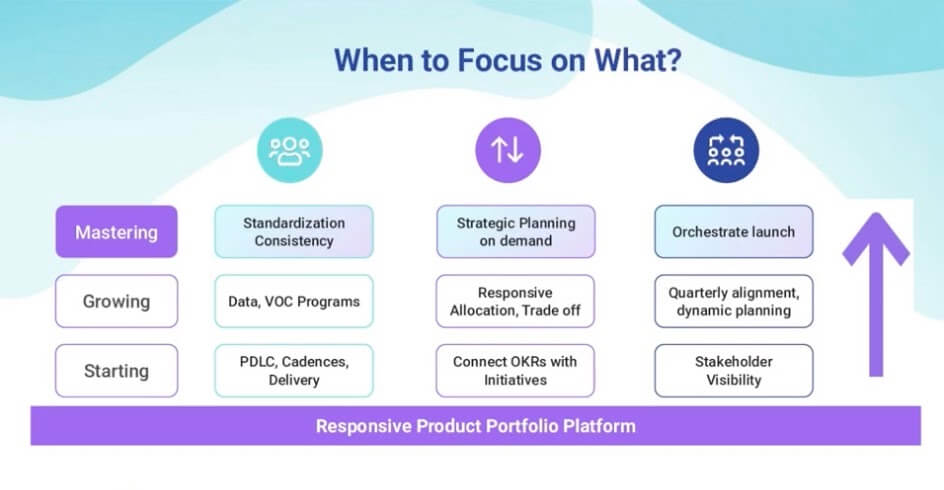
Empower vertically
In many ways, it's a way of doing things, sharing each other's effort, and making sure our measurement and team engagement and strategic planning is in place.
Some of you are familiar that companies traditionally just used to do planning on an annual or semi-annual basis but the mastering team can do it on-demand with the right people and process, so that you can adjust the market needs quickly with the platform visibility and data.
Orchestrate cross-teams
Orchestrating launch typically gets you to a much later stage more efficiently, because you have the right foundation in place. A multi-team can work together and make sure products and pilot launches and testing will not cause a contradiction with each other.
These are the various focus points of product operations as we grow and mature as a function.
Thank you.



 Follow us on LinkedIn
Follow us on LinkedIn



